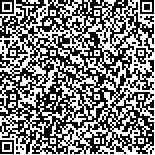下载中心
优秀审稿专家
优秀论文
相关链接
摘要

激光测高卫星在获取全球高程控制点方面具有独特的优势,本文针对ICESat(Ice,Cloud and land Elevation Satellite)卫星上搭载的地球激光测高系统GLAS(Geo-science Laser Altimetry System),提出了一种多准则约束的高程控制点筛选算法。算法综合利用全球公开版的SRTM(Shuttle Radar Topography Mission)DEM数据对GLAS进行粗差剔除,然后利用GLA14产品中的云量、姿态质量标记、饱和度参数、增益参数等多种与测距有关的属性参数进行粗粒度的筛选,保留受云层、大气、地表反射率等影响较小的激光足印点,最后结合GLA01的波形特征参数做进一步精细筛选,提取出高精度的激光点作为高程控制点。本文还采用天津、河北两个实验区的数据,利用高精度的DEM成果数据对筛选的结果进行了验证。实验结果表明,经多准则约束筛选后的激光足印点具有很高的高程精度,能够作为1:50000甚至1:10000立体测图时的高程控制点使用,研究结论可为国产高分辨率卫星在境外地区进行无地面控制点的立体测图提供参考。
关键词:
ICESat/GLAS 多准则约束 激光测高卫星 高程参考 波形特征Satellite laser altimeter has a unique advantage in obtaining the global elevation control points. The Geoscience Laser Altimetry System (GLAS) loaded on the Ice, Clouds, and Land Elevation Satellite(ICESat) has collected numerous high-accuracy terrain elevation points from 2003 to 2009, which can be selected as elevation control points. In this study, an algorithm is proposed to select ICESat/GLAS data as elevation control points based on multi-criteria constraint. The Shuttle Radar Topography Missions-Digital Elevation Model (DEM) data is proposed to initially eliminate the gross error of GLAS points. Then, the parameters regarding laser ranging in the GLA14 product, such as cloud, attitude quality mark, and energy saturation parameters, are introduced to implement coarse selection and to obtain highly reliable GLAS points, which are less influenced by cloud, atmosphere, or reflectivity of the ground. Finally, the waveform characteristic is presented to extract high-accuracy laser points as elevation control points. The experiment is implemented in Tianjin and Hebei, and the algorithm is validated by the DEM reference data. From waveform analysis, the relationship between elevation accuracy of GLAS points and terrain relief can be described in detail. In addition, the selected result in Tianjin experimental region is better than 0.725 m; another result is better than 3.288 m. Moreover, if the criterion is strict, then the elevation accuracy may be improved. Preliminary test results show that the elevation accuracy of laser points is favorable after selection by the multi-criteria constraint method, which can be used as elevation control points for 1:50000 and 1:10000 stereo mapping. These conclusions will be valuable for global mapping using domestic satellite without ground control points.

